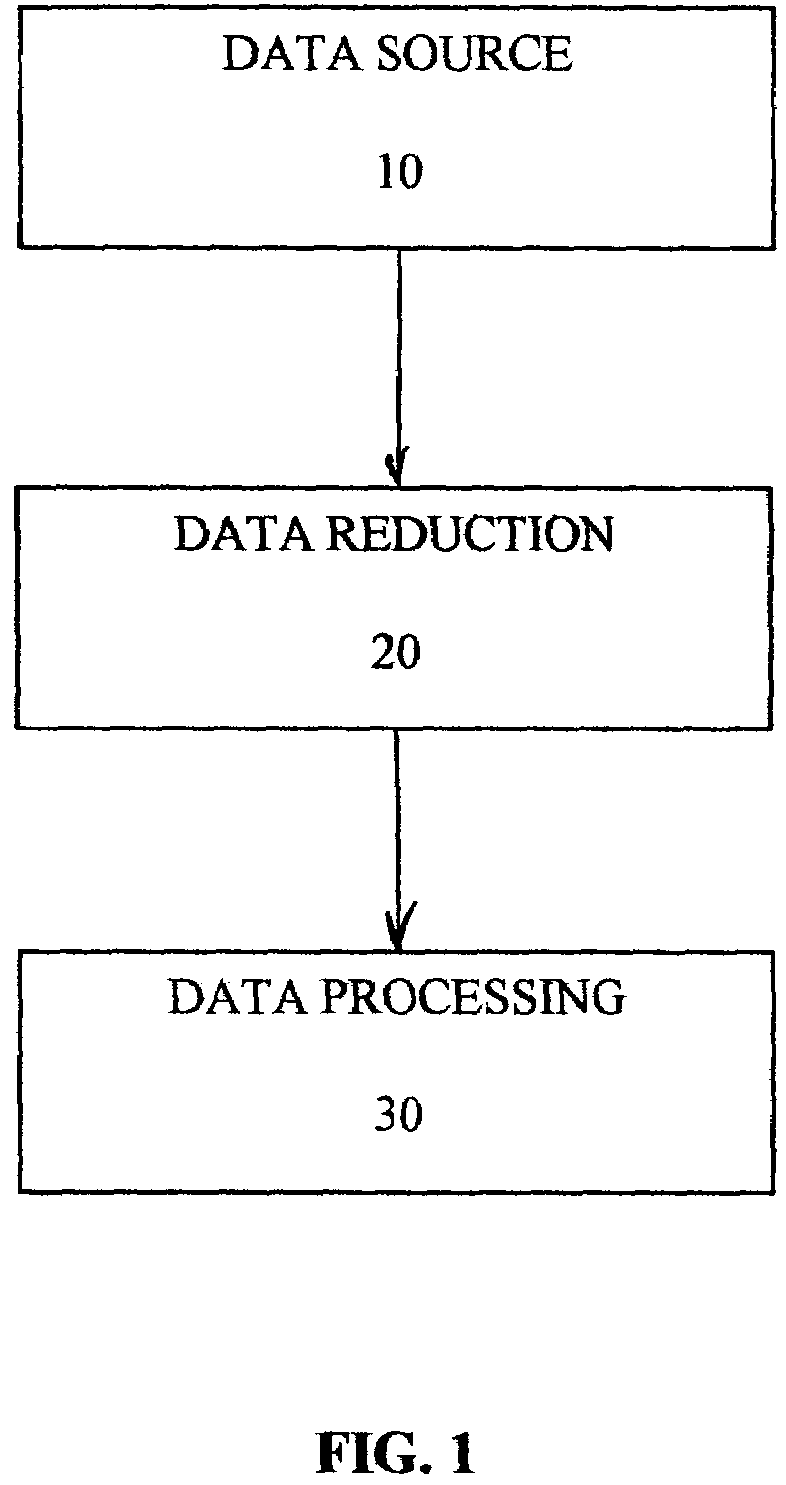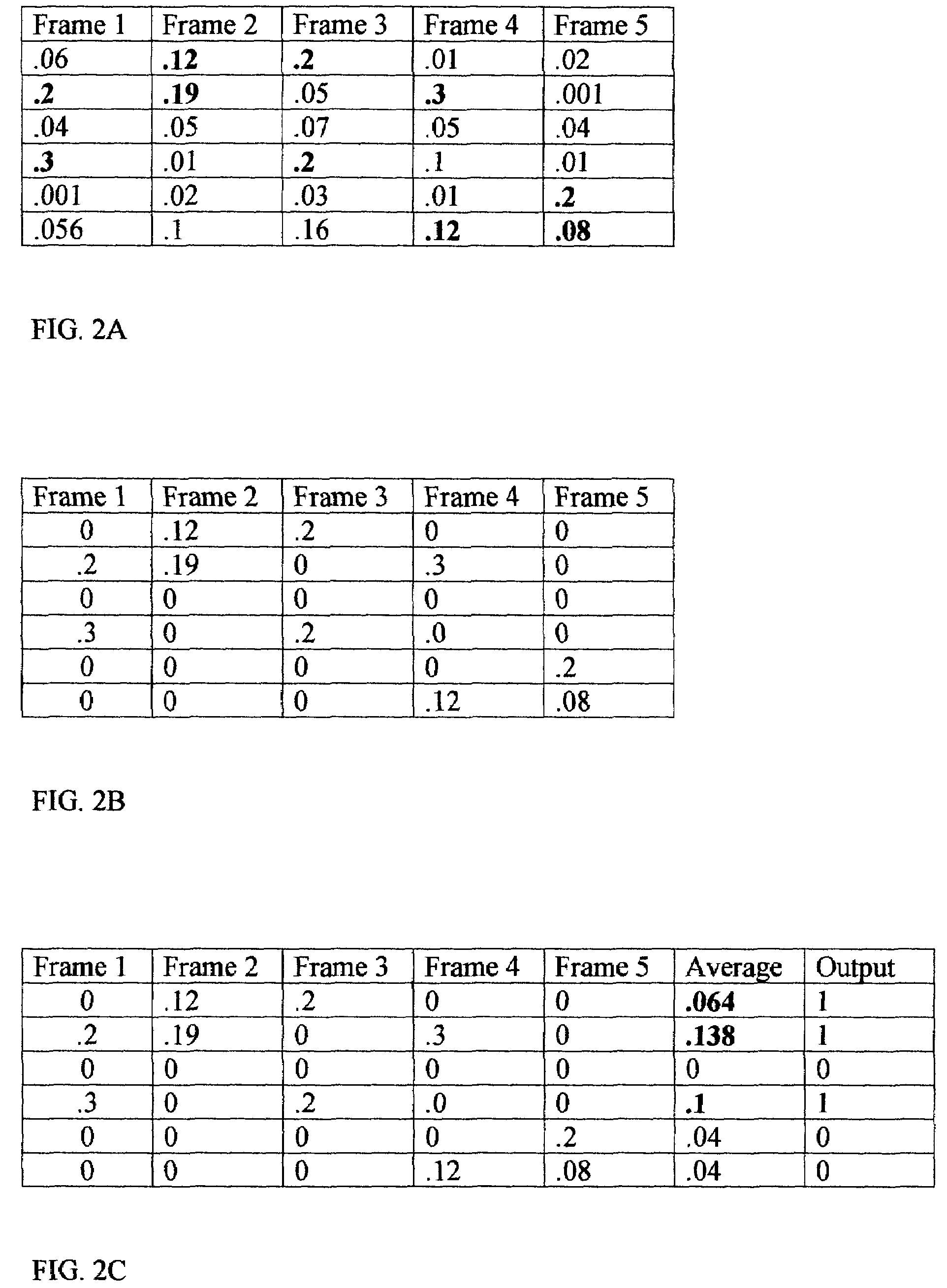Method for determining the likelihood of a match between source data and reference data
a source data and likelihood technology, applied in the field of methods, apparatus and articles, can solve the problems of long and costly process of data analysis, lack of reliability, high cost, etc., and achieve the effect of less impacted by noise, simple analysis, and robustness
- Summary
- Abstract
- Description
- Claims
- Application Information
AI Technical Summary
Benefits of technology
Problems solved by technology
Method used
Image
Examples
Embodiment Construction
[0038]Referring to FIG. 1, the present invention may be used in applications having a source of data 10. This source may be comprised of data acquisition components of a broadcast monitoring system of the type described in U.S. Pat. No. 5,437,050 (which is incorporated herein in its entirety), but is not in any way so limited. Although the present invention will be described principally with reference to this application, it should be understood that the present invention can be used in many other applications. For example, applications of the present invention include data reduction for the analysis and processing of any time-varying signal that can be decomposed into a finite number of characteristics. These applications include audio analysis where the characteristics are the output frequencies as determined by a discreet Fourier transform or a fast Fourier transform (as in the above mentioned application). Some of these applications include determining the characteristics of sou...
PUM
| Property | Measurement | Unit |
|---|---|---|
| frequency | aaaaa | aaaaa |
| air time | aaaaa | aaaaa |
| speed | aaaaa | aaaaa |
Abstract
Description
Claims
Application Information
 Login to View More
Login to View More - R&D
- Intellectual Property
- Life Sciences
- Materials
- Tech Scout
- Unparalleled Data Quality
- Higher Quality Content
- 60% Fewer Hallucinations
Browse by: Latest US Patents, China's latest patents, Technical Efficacy Thesaurus, Application Domain, Technology Topic, Popular Technical Reports.
© 2025 PatSnap. All rights reserved.Legal|Privacy policy|Modern Slavery Act Transparency Statement|Sitemap|About US| Contact US: help@patsnap.com



